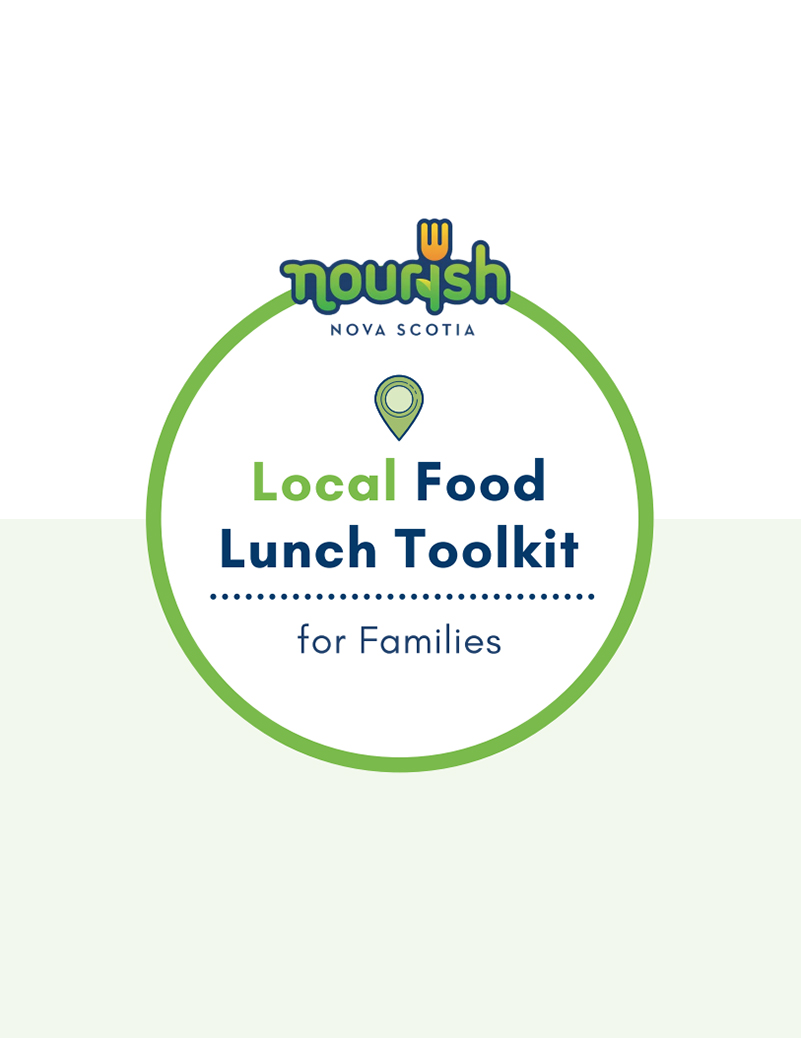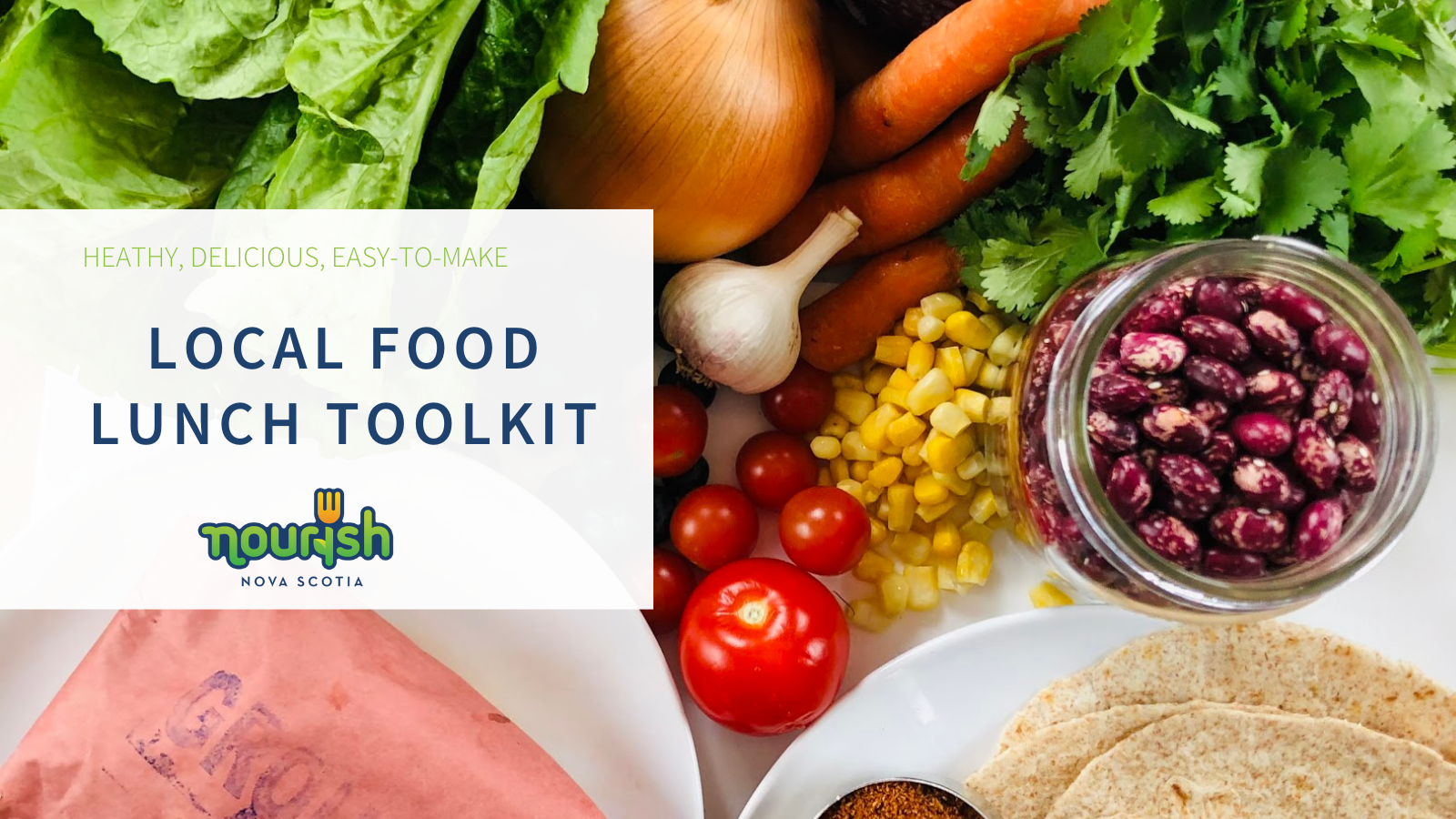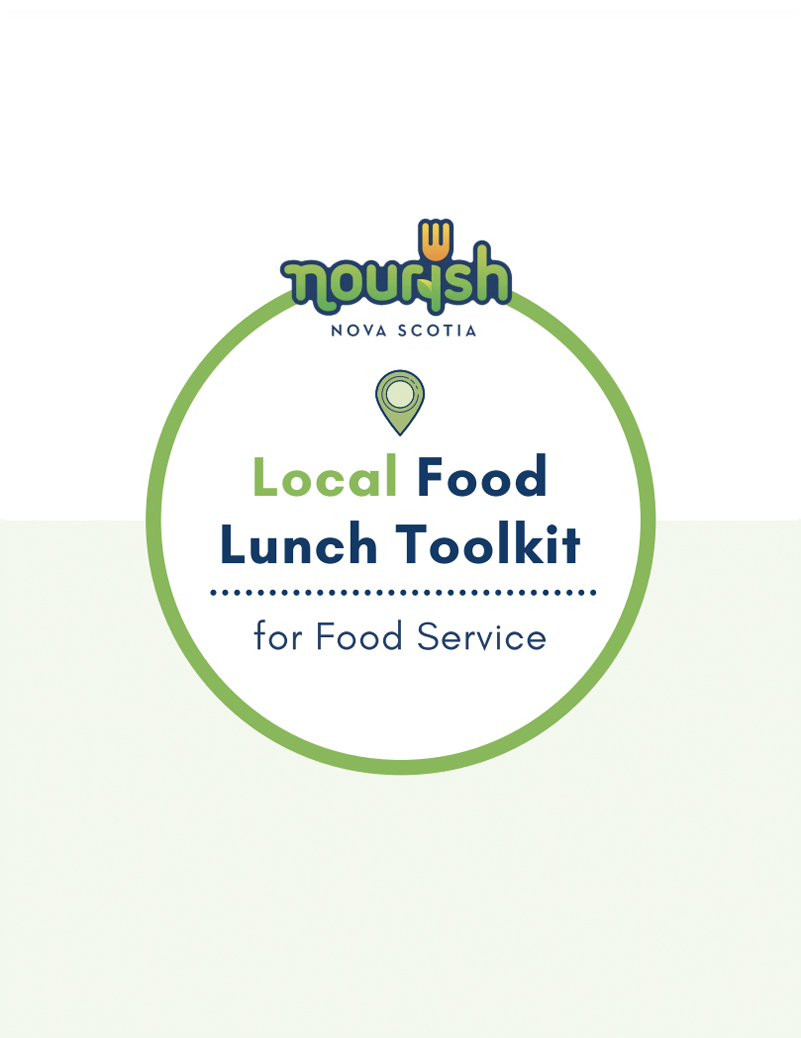Are you looking to bring more locally-produced foods into your menus?
 Nourish Nova Scotia has developed an exciting Local Food Lunch Toolkit to serve up healthy, delicious and easy-to-make recipes for schools and families. While developed with Nova Scotia local products in mind, schools and families across the country can look to this new resource for ideas and inspiration!
Nourish Nova Scotia has developed an exciting Local Food Lunch Toolkit to serve up healthy, delicious and easy-to-make recipes for schools and families. While developed with Nova Scotia local products in mind, schools and families across the country can look to this new resource for ideas and inspiration!
Available in English and French, the toolkit is the first of its kind, designed specifically with busy food service professionals in mind. The goal? To help make the incorporation of local ingredients into scratch-cooking not only more accessible, but rewarding! The toolkit’s authors are food service professionals and know all too well how daunting it can be to create recipes from scratch for a large number of people, especially kids. This toolkit aims to alleviate some of that pressure with the reassurance that all recipes have developed to align with the Canada Food Guide – and they have been tried, tested and approved by Nova Scotia students.
As a bonus, an adapted version was created for families to help take some of the stress out of meal planning, and encourage opportunities for families to cook together.
We love that the toolkit provides detailed but flexible instructions, offering ideas for substitutions, considerations for allergies, and tips for allowing student choice with the ‘create your plate’ feature. The toolkit even has curriculum connections!
These recipes are sure to help bring more healthy, local foods into schools and households, and make life easier for busy food service professionals and families. It’s a win-win, as one of the supporting partners shares:
“This toolkit makes getting local, healthy foods into the hands of our school children and families that much easier – building strong and healthy communities for the future.”
– Carolyn Van Den Heuvel, Director of Outreach & Member Relations of the Nova Scotia Federation of Agriculture







